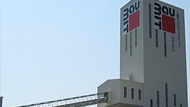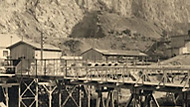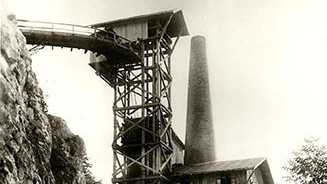


What began in 1810 with a single lime kiln, was to develop into one of Europe's most successful building material brands. In 1988 the Baumit brand was created through the of collaboration two Austrian building material companies.

Baumit France aquires the façade arm of the Cantillana Group in France.

The Wopfinger Group aquires 27 companies in 14 countries, and receives trademark rights for "Baumit" and "Kema".

Improved development of Baumit Nanopor - self-cleaning using photocatalysis without the use of biocides.

Establishment of Baumit France (Chelles/Paris).

Introduction of Baumit CreativTop for individual, creative façade design.

Baumit develops Europe's most comprehensive colour system for façades - Baumit Life, with 888 colours.

Robert Schmid takes over the management of the Schmid Industrie Holding. Baumit also establishes Baumit Spain in (Madrid).

Establishment of Baumit Turkey (Istanbul), Baumit Ukraine (Kiev) and Baumit Switzerland (Tagelswangen). In the same year, Baumit launches the "Healthy Living" product range with Baumit Klima.

Baumit develops Baumit Nanopor - the self-cleaning façade.

Establishment of Baumit China (Shanghai) and introduction of Baumit StarTrack – the revolution in façade technology.

The company Schmid Industrie Holdings acquires 100% of Bayosan in Germany (Bad Hindelang).

Commissioning of Europe's largest wet plaster works in Wopfing.

Baumit develops the "Baumit open® - Die KlimaFassade" breathable thermal insulation composite system.

Robert Schmid takes over the management of the "Wopfinger Stein und Kalkwerke".

Establishment of Baumit Germany (Coswig).

Establishment of Baumit Bulgaria (Elin Pelin).

Establishment of Baumit Romania (Bucharest) and Baumit Slovakia (Bratislava).

Establishment of Baumit Poland (Wrocław).

Establishment of Baumit Czech Republic (Brandys nad Labem).

The first foreign subsidiary is established: Baumit Hungary (Dorog).

Dieter Kern (wup) and KR Friedrich Schmid (Wopfing) found the "Baumit" building materials.

Friedrich Schmid inaugurates the Wopfing Cement Works.

Production of full thermal protection systems begins.

Development of paste-form decorative plasters.

Dry mortar production begins in Wopfing.

At the age of just 26, Friedrich Schmid takes over the management of the Wopfing Stone and Lime Works.

Commissioning of the first Maerz three-shaft lime kiln.

Engineer Hermann Hofer invents the world's first 2-chamber lime kiln for energy-saving lime production.

Alois Schmid buys the failing Wopfing Stone and Lime Works.

Commissioning of the first mechanical crushing plant. Prior to this the limestone was crushed by hand.

Registration of the Wopfing Stone and Lime Works in the Commercial Register. At that time there were two lime kilns and an office building.

First mention of a lime kiln on the main road to Gutenstein, Austria.